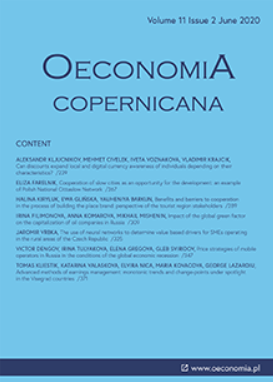Detecting earnings manipulation and fraudulent financial reporting in Slovakia
Detecting earnings manipulation and fraudulent financial reporting in Slovakia
Author(s): Lucia Svabova, Katarina Kramarova, Jan Chutka, Lenka StrakovaSubject(s): Business Economy / Management, Methodology and research technology, Law on Economics, Accounting - Business Administration
Published by: Instytut Badań Gospodarczych
Keywords: Beneish model; discriminant analysis; earnings manipulation; fraudulent financial reporting;
Summary/Abstract: Research background: Misleading financial reporting has a negative impact on all stakeholders since financial records are the primary source of information on financial stability, economic activity, and financial health of any company. The handling of them is primarily the responsibility of managers or owners and reasons for doing so may differ. Their common denominator is the artificial creation of information asymmetry to get different types of benefits. It is, therefore, logical that the issue of detecting opportunistic earnings management comes to the fore. Purpose of the article: The purpose of the study is to create a discriminant model of the detection of earnings manipulators in the conditions of the Slovak economy. Methods: We used the discriminant analysis to create a model to identify fraudulent companies, based on the real data on companies that were convicted from misleading financial reporting in connection with tax fraud in the years 2009–2018. The model is inspired by the Beneish model, which is one of the most applied fraud detection methods at all. Findings & Value added: In order to achieve more accurate detection results, we extended the original model by taking into account the values of indicators from three consecutive years, i.e. by taking into account the development of the potential tendency of companies to be involved in opportunistic earnings management. Our model correctly identified 86.4% of fraudulent companies and overall reaches 84.1% classification ability. Both models were applied on empirical data on 1,900 Slovak companies from the years 2016–2018, while their overlap was 32.7% for fraudulent companies and 38.4% for non-fraud companies. This is a very useful result, as the application of both models rein-forces the results obtained and the identical classification of the company into fraudulent indicates that the manipulation of earnings occurs with a high probability.
Journal: Oeconomia Copernicana
- Issue Year: 11/2020
- Issue No: 3
- Page Range: 485-508
- Page Count: 24
- Language: English

